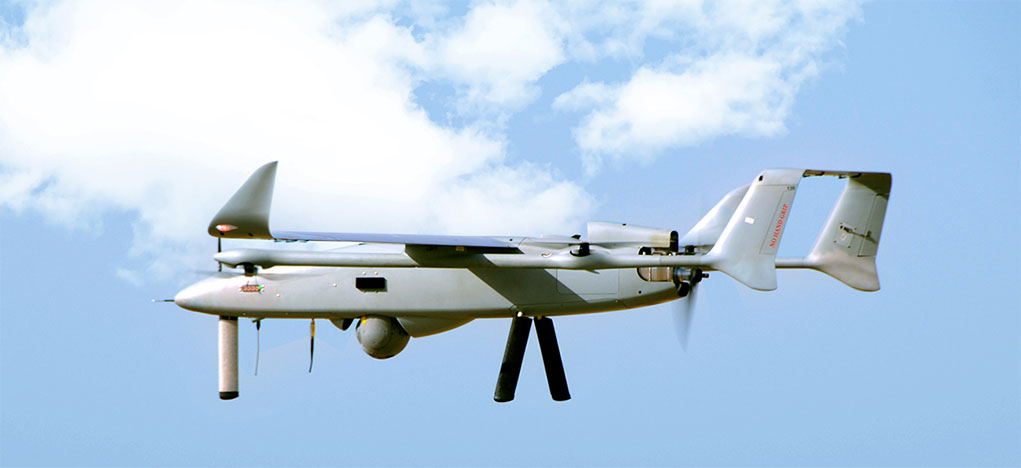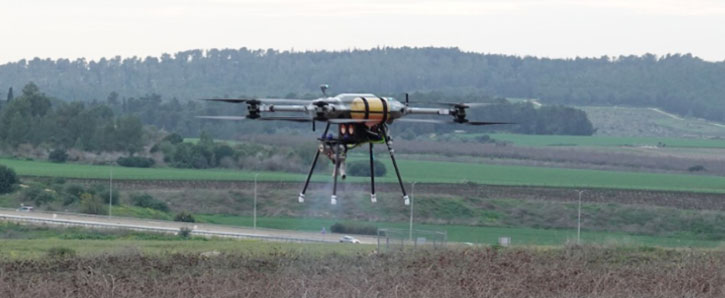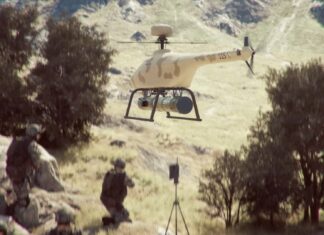Recent combat operations have demonstrated the profound influence of unmanned aerial vehicles on recent warfare. While UAVs have been operational for 50 years, operating them as complete systems, delivering missions with lethal effects in real-time is a new trend.
Large UAVs for Strategic Roles
Elbit Systems’ Hermes 450 and IAI Heron 1 represent the UAVs supporting the operational level in service with the Israel Air Force. Originally claimed to operate only in intelligence gathering, surveillance, and reconnaissance (ISR), Israel confirmed its drones are also armed for routine strike missions on all fronts. The Hermes and Heron drones were among the first aerial assets that could respond with fires to the surprise attack on October 7, 2023; alas, this was not enough to stem the flood.
Since 2010, the IAF has fielded larger MALE drones, including the IAI Heron TP and Elbit System’s Hermes 900. These platforms are operated parallel to legacy systems, providing increased payload capacity, simultaneous use of multiple payloads, longer endurance, and operations at extended ranges provided by their integral BVLOS satellite link. As large platforms, MALE drones are tasked with missions that can span over days and flow at a long range. Such platforms are highly capable of persistent surveillance and precision attack in hostile areas, as long as the enemy is not equipped with surface-to-air weapons.
However, as slow platforms lack agility and maneuverability, they become easy targets for air defenses, as seen in Ukraine, Lebanon, Syria, and Yemen. Given this high vulnerability, air forces consider withdrawing MALE drones to operate from a stand-off range, relying on long-range optronics, radars, and long-range cruise missiles and guided rockets.
Tactical UAS Swarms and Teams
The new penetrating layer could rely on small tactical UAS. An example is primarily Aeronautics’ Orbiter 4, recently fielded by the IAF. Unlike the individual MALE platforms, these drones operate in large groups to effectively cover large areas. This new operation concept is part of RAFAEL’s ‘Storm Clouds’ system of systems. Elbit Systems has also introduced the FAST Capsule, combining UAS and loitering weapons in a combat team that searches, locates, targets, and strikes as a team.

Vertical Take-Off and Landing (VTOL) UAS
Another new trend is the deployment of Vertical Take-Off and Landing (VTOL) small tactical drones, a trend hinged on commercial technologies that began in early 2020. Initially, the Israeli industry was slow to adapt, which opened a window for small companies to evolve. Unlike the large fixed-wing UAS field dominated by large prime contractors, the VTOL field is led by young start-ups like Attis Aviation, Copterpix, Hevendrones, Robotican, Spear UAS, and Xtend, along with veteran UAS developers like BlueBird and Steadycopter that were ready to embrace the new trend.
Unlike large primes, they aim not at market dominance but at specific niches each company addresses. These niches include reconnaissance and surveillance, including indoors and underground, load carrying, countering other UAS and strike missions with small arms and grenades, dropping small bombs, and suicide missions, where the drone is destroyed with its lethal charge.
The latter category includes loitering weapons and One-Way Attack (OWA) drones. Let’s review these unique products and their applications.
Platforms and Load Carriers

Aeronautics Octoper
One of Israel’s more established drone manufacturers, Aeronautics, has developed a wide range of fixed-wing UAS, from the MALE-type Dominator to the Orbiter 2 loitering weapon. Two years ago, the company entered the field of multi-rotor platforms, initially adding a VTOL kit to the Orbiter 3 small tactical UAS and later introducing the Trojan Unmanned Hovering Platform (UHP). In 2024, Aeronautics expanded its portfolio with another VTOL platform – the Octoper. This heavy multirotor platform is designed for autonomous operation and high survivability, which are required in military missions. Using an electrically powered octo-quadrotor configuration, the Octoper can be augmented with a hybrid kit to extend mission endurance to four hours and operate at a distance of up to 100 km. Octoper can be assigned to many missions, including the carriage of multiple sensors on reconnaissance missions or logistic support, such as delivering medical equipment. Designed with foldable arms and rotors, the flexible and modular drone is rapidly deployed within five minutes of its arrival at the launch point.

Aerotor Apus
Aerotor is developing a hybrid propulsion system for drones with a fuel-efficient internal combustion engine (ICE) and electrical motors powered by stored electrical energy generated by the ICE. Unlike other multirotor drones, the Apus uses a central steering system (CSS) that manages the four blades at a fixed RPM, with flight control executed by a variable pitch system, like a helicopter, resulting in more efficient aerodynamics. Unlike helicopters, the Apus do not use swash plates, resulting in a simpler mechanical design. Aerotor plans to produce systems capable of carrying heavy payloads of up to 200 kg. Currently, the company envisions four versions – the Apus 10, carrying a payload of 6 kg; the Apus 30, carrying 30 kg; Apus 170, designed to carry 100 kg; and the Apus 300 Gulliver, designed to carry 200 kg. Earlier this year, the company partnered with IAI to develop the Apus 25, which is optimized for IAI’s requirements. All versions will have a mission endurance of nine hours and operate beyond the line of sight at ranges up to 120km.
 Attis Aviation ROC
Attis Aviation ROC
The company develops a runway-independent medium-sized VTOL UAV called ROC. It is powered by a Hybrid Propulsion System – a heavy fuel engine that accepts JP-8 and JET-A1, combined with four electrical motors, generating the necessary lift on takeoff, landing, and hover. ROC is designed as a certifiable aerial platform for flight in Civilian airspace. The combined propulsion is optimized for long endurance and extended missions. At a maximum takeoff weight of 150 kg, ROC can carry 40 kg of useful payload and remain airborne for 20 hours. Flying at a cruising speed of 50 knots, it can operate up to 150 km from its control station, provided it remains within line of sight. It is equipped for LOS and BLOS communication and functions well even in GPS-denied environments. Its maiden flight is expected by the fall of 2024. (Attis Aviation)
Read more on Israel’s Aerospace and Defense innovations:




















